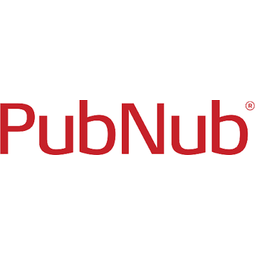Download PDF
Bluebell's Innovative IoT Baby Monitor: A Case Study
Technology Category
- Platform as a Service (PaaS) - Device Management Platforms
- Sensors - Temperature Sensors
Applicable Industries
- Electronics
- Equipment & Machinery
Applicable Functions
- Product Research & Development
Use Cases
- Inventory Management
The Challenge
Bluebell, a company founded by three fathers with healthcare backgrounds, aimed to simplify parenting by creating an innovative baby monitor. The team wanted to capture more data from a variety of sensors across interconnected devices, while also incorporating creative tracking and control features. The goal was to reduce the stress of parenting and improve the well-being of babies. However, they faced the challenge of developing an application from scratch that could capture all this data, enable controls and alerts, and provide data-driven guidance to foster a better connection between parent and child. The team was aware that developing such an application would be time-consuming and costly.
About The Customer
Bluebell is a company founded by three fathers with backgrounds in healthcare. Their mission is to make parenting simpler by leveraging technology. They aimed to reduce the stress of parenting and improve the well-being of babies by capturing more data from a variety of sensors across interconnected devices. They also wanted to add creative tracking and control features to their product. The team at Bluebell is innovative and forward-thinking, always looking for ways to use technology to improve the lives of parents and their children.
The Solution
Bluebell leveraged their prior experience with PubNub, a real-time data streaming network, to develop a system that combined new technology to monitor everything from temperature to sleep positions. The solution included a Parent wristband that provides monitoring and alerts, and also functions as a fitness tracker. The Smart hub added a temperature sensor, speaker, and a nightlight, all controlled by a Mobile app. The combination of sensors and devices could have overwhelmed developers, but PubNub allowed for easy data management, a faster development time, and the scalability necessary for success. PubNub's ease of use, scalability, and reliability were key factors in Bluebell's decision to use it for their innovative baby monitor.
Operational Impact
Quantitative Benefit
Related Case Studies.

Case Study
Smart Water Filtration Systems
Before working with Ayla Networks, Ozner was already using cloud connectivity to identify and solve water-filtration system malfunctions as well as to monitor filter cartridges for replacements.But, in June 2015, Ozner executives talked with Ayla about how the company might further improve its water systems with IoT technology. They liked what they heard from Ayla, but the executives needed to be sure that Ayla’s Agile IoT Platform provided the security and reliability Ozner required.

Case Study
IoT enabled Fleet Management with MindSphere
In view of growing competition, Gämmerler had a strong need to remain competitive via process optimization, reliability and gentle handling of printed products, even at highest press speeds. In addition, a digitalization initiative also included developing a key differentiation via data-driven services offers.

Case Study
Remote Temperature Monitoring of Perishable Goods Saves Money
RMONI was facing temperature monitoring challenges in a cold chain business. A cold chain must be established and maintained to ensure goods have been properly refrigerated during every step of the process, making temperature monitoring a critical business function. Manual registration practice can be very costly, labor intensive and prone to mistakes.

Case Study
Predictive Maintenance for Industrial Chillers
For global leaders in the industrial chiller manufacturing, reliability of the entire production process is of the utmost importance. Chillers are refrigeration systems that produce ice water to provide cooling for a process or industrial application. One of those leaders sought a way to respond to asset performance issues, even before they occur. The intelligence to guarantee maximum reliability of cooling devices is embedded (pre-alarming). A pre-alarming phase means that the cooling device still works, but symptoms may appear, telling manufacturers that a failure is likely to occur in the near future. Chillers who are not internet connected at that moment, provide little insight in this pre-alarming phase.

Case Study
Premium Appliance Producer Innovates with Internet of Everything
Sub-Zero faced the largest product launch in the company’s history:It wanted to launch 60 new products as scheduled while simultaneously opening a new “greenfield” production facility, yet still adhering to stringent quality requirements and manage issues from new supply-chain partners. A the same time, it wanted to increase staff productivity time and collaboration while reducing travel and costs.






